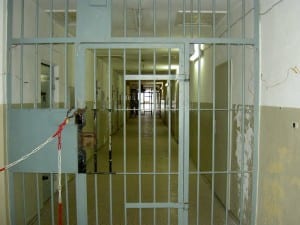‘The Death of Others’: the myth and reality of suicide in the German Democratic Republic
By Sarah J Young, on 27 November 2014
An award-winning film reinforces the gap between perceptions of the GDR and its more complex reality, finds Udo Grashoff.
I was about to leave my flat as the phone rang… I picked up; a woman, who introduced herself as the assistant of a West German filmmaker, required my urgent assistance. It was about a funeral oration in a film set in the GDR in the 1980s. In the film, a Stasi officer was assigned to spy on a playwright, Georg Dreyman. At the funeral oration for a colleague who has committed suicide, Dreyman accuses the GDR authorities of coldheartedly ignoring people who commit suicide. He claims that the state stopped compiling suicide statistics in 1977.
I was consulted on the dates and facts, which made sense as I wrote my doctoral thesis on suicide in the GDR. What I had to explain to the filmmaker’s assistant was rather complicated. Except for the period between 1956 and 1962 suicide statistics were not published in the statistical yearbooks. However, the ‘State Central Bureau for Statistics’ recorded suicides with Prussian accuracy, but kept them a state secret. Besides, in 1968 the GDR Ministry of Health launched a strategy for the prevention of suicide. Two suicide prevention centres were founded. Although there was no public discussion of suicide, there was a limited, if diminishing, coverage of the issue in professional journals. From 1977, even specialists could not access data.
This is not the same as to suggest, as Dreyman does in the film, that statistics on suicide were no longer being kept, but given the context – in 1986, a GDR citizen simply could not know what could only be researched after the Wall came down – I advised leaving the eulogy as it was.
This was in around 2005, and only much later did I realise that I had taken part in the making of ‘The Lives of Others’. To my surprise, the film became a worldwide hit. ‘The Lives of Others’ has shaped the image of the East German dictatorship much more than any scholarly book on the GDR history. The film was praised as highly authentic and historically accurate. Locations like the Stasi prison in Berlin-Hohenschoenhausen were used; details of everyday life in the GDR and especially in the art scene were meticulously reconstructed.
Of course, not everyone bought the story. Slavoj Žižek said that the film failed to show the ‘true horror’ of the dictatorial system. Mary Fulbrook complained that the story did not ‘present the GDR in all its complexities’. Anna Funder doubted that a Stasi officer would have been able to log in false information into Stasi files in order to protect a victim. (more…)
 Close
Close


